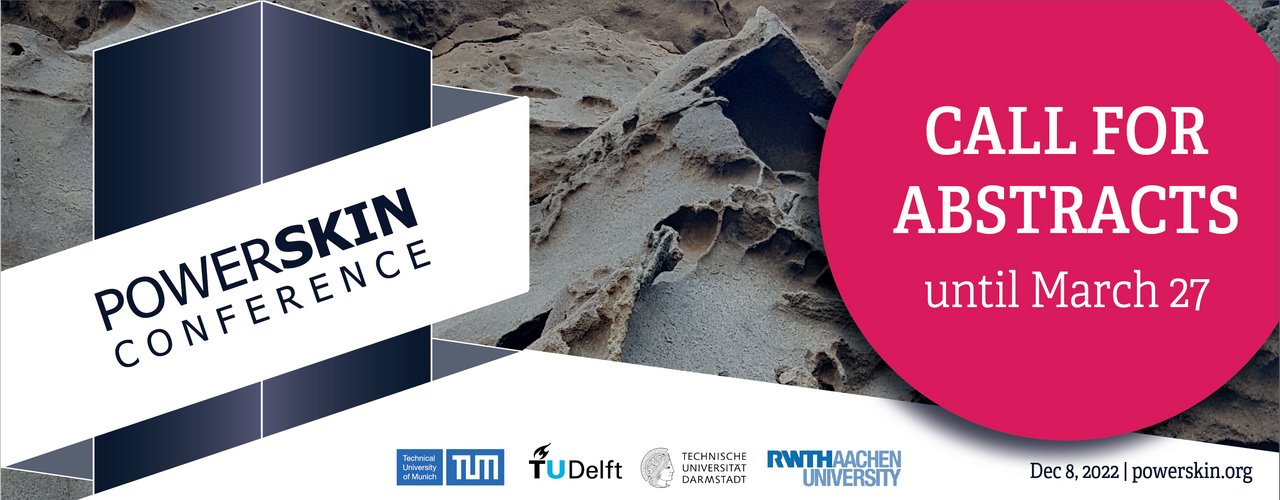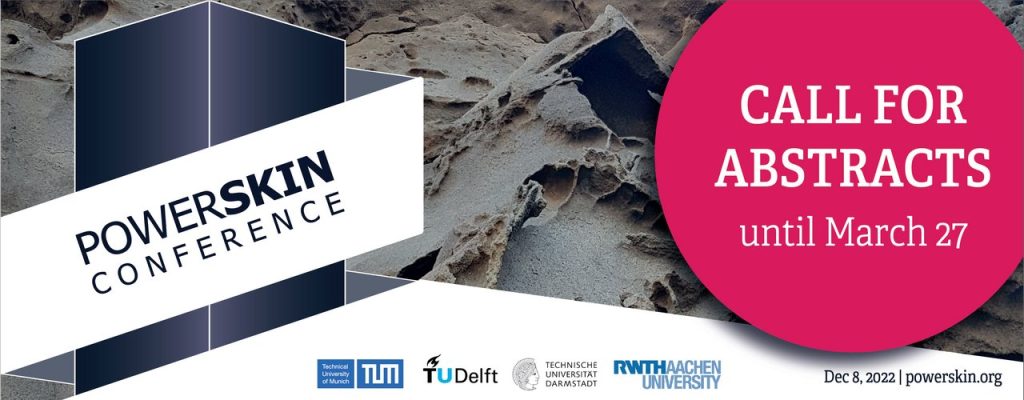In 2017, Prof. Dipl.-Ing. Thomas Auer (TUM), Prof. Dr.-Ing. Jens Schneider (TU Darmstadt) and Prof. Dr.-Ing. Ulrich Knaack (TU Delft) launched the PowerSkin Conference at the trade fair BAU in Munich.
Integrated into the biennial trade fair BAU, the PowerSKIN conference bridges the gap between science and practice, as well as between the various specialist disciplines of architects, engineers and scientists.
The PowerSkin Conference aims to address the role of building skins to accomplish a carbon neutral building stock. Presented papers showcase recent scientific research and developments as well as projects related to building skins from the perspectives of material, technological and design.
Topics such as building operation, embodied energy, energy generation and storage in context of the three conference sessionsin envelope, energy and environment are considered.
Building Skin
The third skin of human beings – the building envelope – had a very long process of development within architecture. The advancement of curtain walls produced a structural independency, but it remained an important yet passive element. Energy performance and environmental quality of buildings are significantly determined by the building envelope.
In the meantime, the façade has experienced a change in its role as an adaptive climate control system that leverages the synergies between form, material, mechanical and energy systems in an integrated design.
Contemporary façade design aims for an optimized environmental quality while minimizing the use of resources. Further progress requires the development of sustainable, smart materials as well as active and passive systems, which can easily be integrated and maintained. Over the past decades, glass became the dominating building skin due to its improved thermal performance and adaptability with regard to transparency, solar and daylight control. This leads to a flexible interaction between indoor and outdoor environment and provides a dynamic control scheme. Recent developments provide an integration of mechanical systems as well as components for energy generation and storage.
On the one hand, this leads to architectural designs that are fully independent of local climate conditions, building culture, and other constraints, while still providing an optimized environmental quality. On the other hand, it also enables architects and engineers to design buildings that interact with and adapt to climate, user demands and respect local conditions.
As an international scientific event – usually held at the BAU trade fair in Munich – the PowerSKIN Conference builds a bridge between science and practice, between research and construction, and between the latest developments and innovations for the façade of the future.



